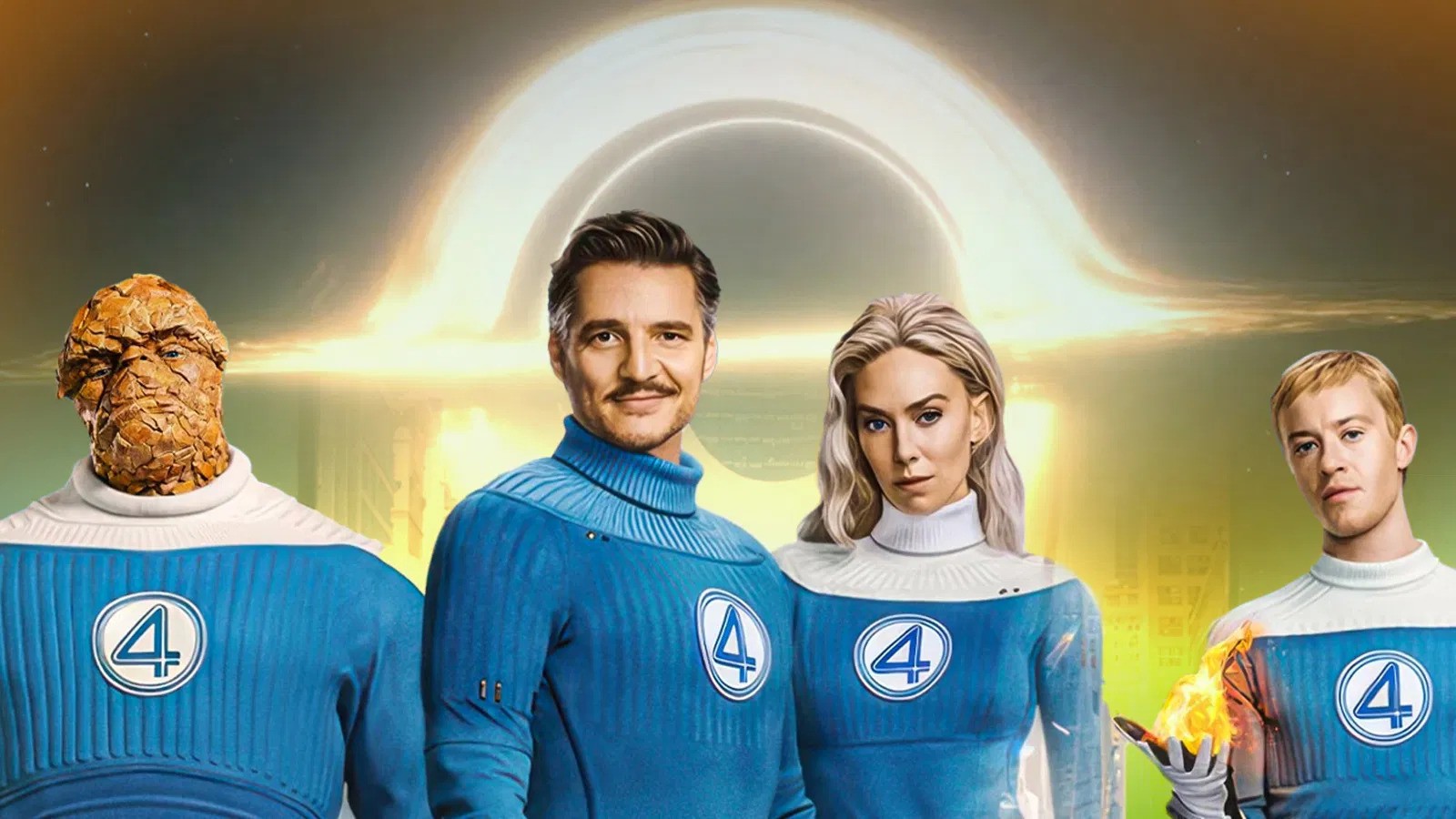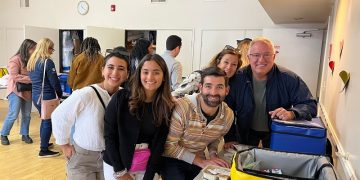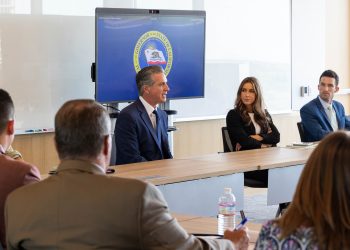
FILM REVIEW
THE FANTASTIC FOUR: FIRST STEPS
Rated PG-13
115 Minutes
Released July 25th
The Fantastic Four: First Steps has a different aura from most comic book films. Watching it transports us back to a time when comics had mainstream popularity. The environment is completely 1961, the period when Jack Kirby and Stan Lee were writing these comic book stories. In the first few minutes, the film explains efficiently how our four heroes became endowed with superpowers accidentally, setting a tone of realism for the story.
These four are “Reed Richards/ Mister Fantastic” played by today’s actor-who-seems-to-pop-up-everywhere, Pedro Pascal, “Sue Storm/Invisible Woman” who is realized by the brilliant Vanessa Kirby, ”Ben Grimm/ The Thing” brought to life by Ebon Moss-Bachrach who has gained acclaim for his role in TV’s The Bear, and young Joseph Quinn as “Johhny Storm/The Human Torch.”
Pascal channels his inner nerd as hyper-intellectual Reed, who learns to get out of his own head, care for others, and communicate with heart. Kirby’s Sue channels incredible power as she fights evil while pregnant, gives birth in space, and is a superpowered protector to her baby son. Director Matt Shakman helmed all 9 episodes of the futuristic WandaVision for Marvel Studios on TV. He learned the business as a child star on the series Just the Ten of Us (1987-1990), was cast in Night at the Magic Castle (1988), and left the business to go to school. He came back to LA and became a prolific TV director in 2007, and now Marvel chose him to direct this movie.
The realism of the film, unusual for comic movies, is further enhanced by the extraordinarily detailed early 1960s sets and environments created by production designer Kasra Farashani and his team. 1961 New York City is strikingly accurate – I can vouch, I often visited my aunt in the city at that time. The cars and the buildings, the upscale apartment that Reed and Sue share, with its expansive picture window looking out over the city, are all mid-century modern.
What struck me most, though, about this movie was its faithfulness in recreating the sense of awe of those days, an awe of the amazing possibilities that seemed freshly accessible to humankind due to scientific developments, and the general belief that if we tried hard enough and smart enough, we could accomplish anything we dreamed of. Composer Michael Giacchino’s expansive score adds to the awe element of the story and visuals.
In keeping with the period throwback, the story parallels the incredible steps our country was taking during that decade to advance space travel, unaided by many of the technical developments we now take for granted. With rudimentary mobile devices connected by radio and only elementary tech machinery, Apollo 11 astronauts had to continuously calculate thrust and angle to stay on course while their ship was going into orbit around the moon. They needed to give the engine a push just at the right moment to enter the moon’s atmosphere and land successfully. Buzz Aldrin was the mathematical leader of the Apollo 11 moon landing team in July 1969.
As pilot of his lunar module, he also functioned as their computer, constantly calculating as his team made their momentous landing on the moon. One wrong computation and the capsule could have been lost in space or crash-landed. This I learned years ago at an event where Aldrin, now 95, told the story himself. Another historical figure of the time, the great Walter Cronkite, anchorman of CBS Evening News from 1962-1981, is hinted at in the voice of the newscaster in the film. Cronkite was often called “the most trusted man in America” and ended each broadcast with “and that’s the way it is.” Interesting that no one tried to take him off the air for telling stories they found uncomfortable.
In the comics and in this story, Reed Richards is the math genius. He has doctorates in theoretical physics, mechanical engineering, materials science, applied mathematics, and computer science. He is the Buzz Aldrin of the Fantastic Four. Another historical figure is suggested in this film, in Sarah Niles’ character “Lynne Nichols,” who resembles mathematician Kathryn Jackson. Jackson was one of the black female mathematicians behind the success of the 1960s space program, memorialized in the movie Hidden Figures.
In 1961, comic creator Jack Kirby said, “If you look in my characters, you will find me.” The whole world of this movie is the era of 1961, so conceivably we are experiencing Kirby’s life and his persona in Reed Richards’ realm.
Kathryn Whitney Boole has spent most of her life in the entertainment industry, which has been the backdrop for remarkable adventures with extraordinary people. She is a Talent Manager with Studio Talent Group in Santa Monica. kboole@gmail.com












